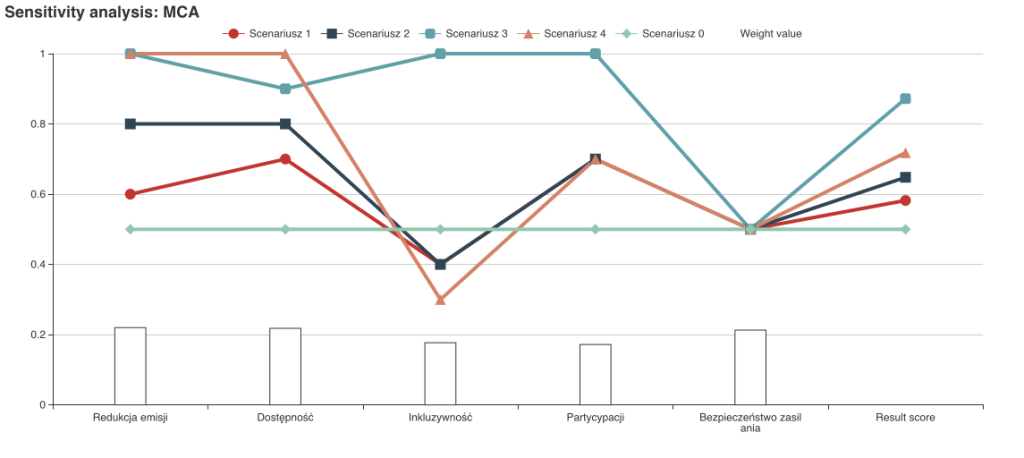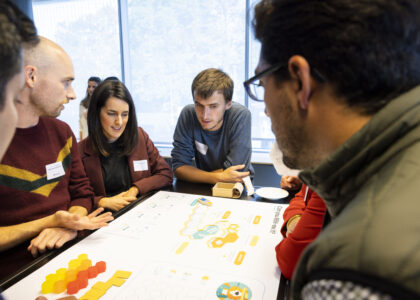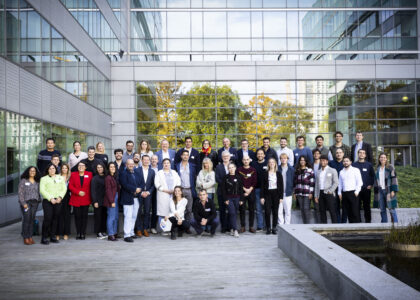by Katarzyna Rajkiewicz @NAPE Poland
One of the main ambitions of the RENAISSANCE project is that of directly engaging citizens in the decision making process, when it comes to deploy a new local energy community. All partners identified the most appropriate engagement strategies to ensure participation in the four European pilot sites and in all International replication sites. Last week NAPE and VUB organised MAMCA workshop to involve a group of citizens residing in Szaserow, Poland, in order to identify their most desirable scenario for an energy community.
The workshop took place online on the 17th of February and the interest on energy community housing assocation (HA) “Szaserow” was very high. There were over 25 (twentyfive) participants registered and 18 (eighteen) finally joined our meeting. The participants were eager to cooperate and had a lot of questions on the technicalities of proposed solutions.
During the first session attendees received essential information about the project and about the MAMCA stakeholder engagement methodology.
Read more about the MAMCA methodology:
Objectives
The main objective of the workshop was to present current situation of HA “Szaserow” from the technical point of view – which buildings can be use for PV and how can those be used to address overall need of the inhabitant through creation of energy community.
We presented current legal framework concerning the creation of an energy community in Poland. The polish government goal is to allow production, distribution, trading, aggregation, storage of electricity and implementation of projects aimed at improving energy efficiency and providing services in the field of charging electric vehicles for its members. The regulatory bill is still under development.
At first, the HA “Szaserow” shortly analysed the feasibility study (2016) for the use of building roofs for the construction of PV installations:
- 12 of the 28 buildings can be used as most are shaded by trees
- Only the energy consumption in the common parts of the buildings was included in the calculations
- The payback period was 23 years (without subbsidies)
- There was no net-metering system at the moment when the feasibility study was conducted
Soon after the coffee break participants could already start with an exercise collecting keywords that answered to the question: “What would you expect from the participation in an energy community?“. The resulting word-cloud (image in Polish) shows what citizens see as benefits of joining an energy community:

Thanks to this initial ice-breaker participants could feel more at ease expressing their opinion about their perception of benefits and barriers related with the self-consumption and self-production of energy in a local community of prosumers. Next part of the workshop was dedicated the identification of the main goals of the community:
- Affordability/lower energy bill
- Reduced CO2 emissions
- Inclusiveness
- Participation
- Safety (grid resilience and stability)
What was additionally underlined in the survey was the need of a better illumination of common outside areas and and increased activity over the interests of HA “Szaserow” (participation in reducing climate change by Poland). Three different potential energy community scenarios were presented and explained both in english and in the local language. If questions emerged they could be clarified right away and all participants had a chance to speak out freely. The presented scenarios for energy community had main assumptions:
- Maximum PV capacity allowed: 975 kWp (based on roof area)
- Three type of users based on flat size in square meters:
- Type 1: < 39 m2
- Type 2: 40 – 70 m2
- Type 3: < 70 m2
- The energy community is a single “big consumer”, meaning that the optimization is done for the whole community and results for each user are extracted afterwards
Most of the participants represented users belonging to type 2. The four scenarios presented were addressing needs of different electricity consumers:
- SCENARIO – Common areas of 12 buildings with suitable roof for PV (27098 kWh/year)
- SCENARIO – 12 buildings with suitable roof for PV, common areas + flats (667139 kWh/year)
- SCENARIO – 28 buildings, common areas + flats (1739249 kWh/year)
- SCENARIO – 12 buildings with suitable roof for PV become prosumers (667139 kWh/year) selling the surplus energy to the remaining 16 buildings (1072107 kWh/year), buying energy from the prosumers

After explanation of each scenario, participants could start using the online MAMCA tool. Thanks to a validated survey process, scenarios could be ranked and the different sets of stakeholder objectives identified weighted. By doing so the tool could proceed with a sensitivity analysis and Maria Luisa Lode from VUB could share visually results. At this point all participants were invited to discuss and comment, facilitated by myself and Maria.
The third scenario that was presented gained the highest score and most participants agreed to adopt is as implementation objective for their future residential renewable energy community.

The main question that raised during the workshop was the payback time: even though it was lower than what initially emerged from feasibility study (23 year to 10 years), participants were still in doubt about which one was the more profitable. The general attitude was that of extending the investment and increase PV panels ( f.e. on the ground or on buildings in the neighborhood) in order to reduce the payback time. NAPE underlined that the payback time is currently calculated without the possibility of subsidies or grants which might be available soon through the “Recovery and Resilience plan”.
Conclusions
Half of the participants were already keen to invest in PV panels. Main positive comments focused on the reduction of CO2 emission and on being more ecological and sustainable as energy consumers. The majority of participants was willing to invest 4000 pln in the short term (approximately 800 €). The group was already well informed about RES usage and the questions were mostly technical – payback time, maintenance costs, service life and location of the PV. Participants underlined how the shortening of the payback time to 5 years could increase the overall interest from inhabitants. There were even some suggestions to install small wind turbines in order to generate more energy.
In conclusion HA “Szaserow” is ready to work and be engaged in creation of the energy community. The obstacles raised (besides the financial ones) are mostly connected to the low awareness on energy savings and electricity tariffs which can be addressed by further communication campaigns addressed to the HA “Szaserow” inhabitants. The workshop was very well received and welcomed by participants. NAPE and VUB have received further questions, both from those who participated and from those who couldn’t and the team is following future development of the community.
Stay tuned for updates!
Follow us:



